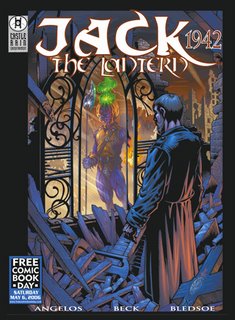How to Shop Comic Book Sales

If your comic book shop is anything like mine, they probably have at least on big sale a year. My shop has it's big sale coincide with Free Comic Day. Here's a few tips for maximizing those sales.
1. Prepare:
1. Prepare:
A. Make a list of the comic books you own Comic books.
You can use buy programs that help you create your own Comic Book Database, or you can use programs you might already have, like Excel, or even something as simple as Microsoft Word or Notepad.
I suggest that you use a computer based program rather than just a legal pad simply because as you add on, it will be easy to insert new data, and you can always print up a hardcopy later.
The benefits of Comic Book Database software are the inclusion of cover scans, some offer free, downloadable price and title updates, the ability to use barcodes* for entries, find features which can indicate character appearances, deaths, origins, storylines, and writers and artists work, add multiple entries at once, instantly sort lists, print comic lists, export data to HTML lists, and track loans.
Here are some Comic Book Database programs:
ComicBase 10
Collecterz.com Comic Collector database
Comic Collector Professional
Justapps.com Comic Book Manager
* You will need to invest in a barcode scanner which can cost well over $100 to use this feature
B. Research:
From your list of collected comics you can extrapolate what books are missing from your run of issues. You can then create a list of missing books in a spreadsheet program, or in other programs mentioned before. If there are characters, writers, artists, or storylines that you like, you might consider searching for such items at CBDB (the Comic Book Database) and GCD (The Grand Comic Book Database), which will help you to create a list of issues containing the searched entries.
I prefer GCD because for the simple setup, offering categorized results. However, neither CBDB nor GCD are completely exhaustive, and you will be able to put together the most complete list by using both databases.
It’s important to include the title, issue number, month and year in your list. If you’re list covers many items, you might include a note as to what characters, writers, artists, or storylines. You might also include a column as a check list for issues as they are collected.
Once you’ve put together a list and printed it up, you’d be best served to put the list in a binder or folder, anything to contain and organize the list. You should take your list with when you go to your local comic book store.
2. Bargain Bins:
Comb the bargain bins first, and don’t forget to consult your missing/ buy list. I ended up spending nearly five times the bargain price on Superman in Action Comics #723 because I went back to search the bargain bins afterwards.
And when I say comb, I mean comb. Go through the stacks one by one, as they may not be alphabetical. You never know what you’ll find, and you may pick up a stack of issues missing from a run.
Don’t be afraid to try something new if you can grab a few issues cheap. I was listening to Fanboy Radio a while back and remembered one of the interviewees, (Max Collins, I believe) talking about the series Ms. Tree, from Renegade Press. I found a few issues in the bargain bin and gave them a shot, a good choice indeed.
3. Paraphernalia and Sale Terms:
The sale will probably be the best time to pick up that action figure that you never got around to buying, or maybe that character T-shirt. The store will likely post the sale terms somewhere and be sure to read carefully. You probably won’t get any discounts on new items, issues or graphic novels, so sales are best for retro-collecting and buying the items you probably don’t grab on your regular visits.
4. Free Comic Day:
If the sale coincides with free comic day, when you pick out your comic(s), pick out something new, that you haven’t read before. It’s free, so you can afford to try something you don’t know anything about. Quite a few Free Comic Day books serve as an introduction to an up-coming or on-going series, so you may even introduce yourself to a new favorite series.

